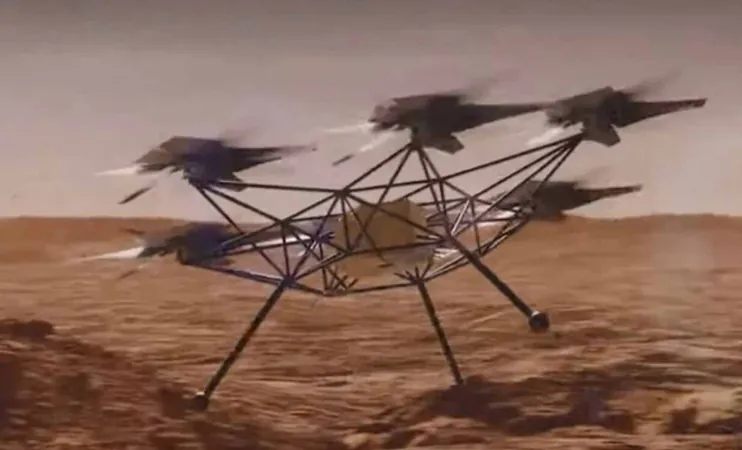
NASA's Nighthawk: The Helicopter Set to Uncover Proof of Life on Mars!
2025-05-07
Author: Chun
A New Horizon in Mars Exploration!
NASA is gearing up for an exhilarating leap into space exploration with the introduction of its Nighthawk Mars helicopter. This innovative mission is on a quest to unlock the secrets of the Eastern Noctis Labyrinthus, a region on Mars renowned for its stunning geological formations.
Unlocking the Mysteries of Martian History
This intriguing area could hold the keys to groundbreaking revelations regarding Mars' past water activity, volcanic history, and even the potential for life! The stakes are high, and the findings could redefine our understanding of our neighboring planet.
Objectives of the Nighthawk Mission
Headed by Pascal Lee from the SETI Institute, Nighthawk aims to probe several vital aspects of Mars’ ancient history. One of its primary goals is evaluating Noctis Landing, a possible site for future human expeditions. The helicopter will provide essential data to assess the terrain's viability for human exploration.
Moreover, Nighthawk will investigate the remnants of Noctis Volcano alongside its glacial ice deposits, revealing insights into the planet's volcanic past and climate transitions. This endeavor could significantly enhance our comprehension of what Mars was once like.
A Technological Evolution Beyond Ingenuity
Nighthawk represents a monumental step forward from its predecessor, the Ingenuity helicopter—the first aircraft to achieve flight on another planet. Unlike Ingenuity’s dependence on the Perseverance rover, Nighthawk will soar independently, utilizing the groundbreaking technology of the upcoming Mars Chopper drone, which is larger and more capable.
Experts assert, "Nighthawk's mission would not be possible with an Ingenuity-class helicopter, but can be realized with the enhanced NASA Mars Chopper under development." With its new six-rotor design optimized for Mars' thin atmosphere, Nighthawk is set to accomplish missions that were once thought impossible.
Cutting-Edge Scientific Tools at Its Disposal
Equipped with three advanced scientific payloads, Nighthawk is primed for meticulous analysis of Mars' surface. The OCCAM camera system provides detailed navigation and geological insights. The NIRAC spectrometer and camera facilitate surface and mineral composition analysis, while the Puli Mars Water Snooper (PMWS) is a neutron detector tasked with mapping subsurface water.
A Flight Plan of Astonishing Ambitions
According to its mission outline, Nighthawk is anticipated to reach altitudes of nearly 4,920 feet (1,500 meters) and could cover an impressive distance of 1.86 miles per flight. The helicopter aims to complete around 100 flights over 240 Martian sols (days), accumulating a treasure trove of data that will provide insights into the planet's geological legacy and its potential to support life.
Decrypting the Secrets of the Red Planet
Positioned at the forefront of Martian research, Nighthawk promises to make unparalleled contributions to our understanding of the Red Planet. The data it collects will deepen our knowledge of one of the most scientifically rich areas on Mars, inching us closer to answering the age-old question: Are we alone in the universe?


 Brasil (PT)
Brasil (PT)
 Canada (EN)
Canada (EN)
 Chile (ES)
Chile (ES)
 Česko (CS)
Česko (CS)
 대한민국 (KO)
대한민국 (KO)
 España (ES)
España (ES)
 France (FR)
France (FR)
 Hong Kong (EN)
Hong Kong (EN)
 Italia (IT)
Italia (IT)
 日本 (JA)
日本 (JA)
 Magyarország (HU)
Magyarország (HU)
 Norge (NO)
Norge (NO)
 Polska (PL)
Polska (PL)
 Schweiz (DE)
Schweiz (DE)
 Singapore (EN)
Singapore (EN)
 Sverige (SV)
Sverige (SV)
 Suomi (FI)
Suomi (FI)
 Türkiye (TR)
Türkiye (TR)
 الإمارات العربية المتحدة (AR)
الإمارات العربية المتحدة (AR)